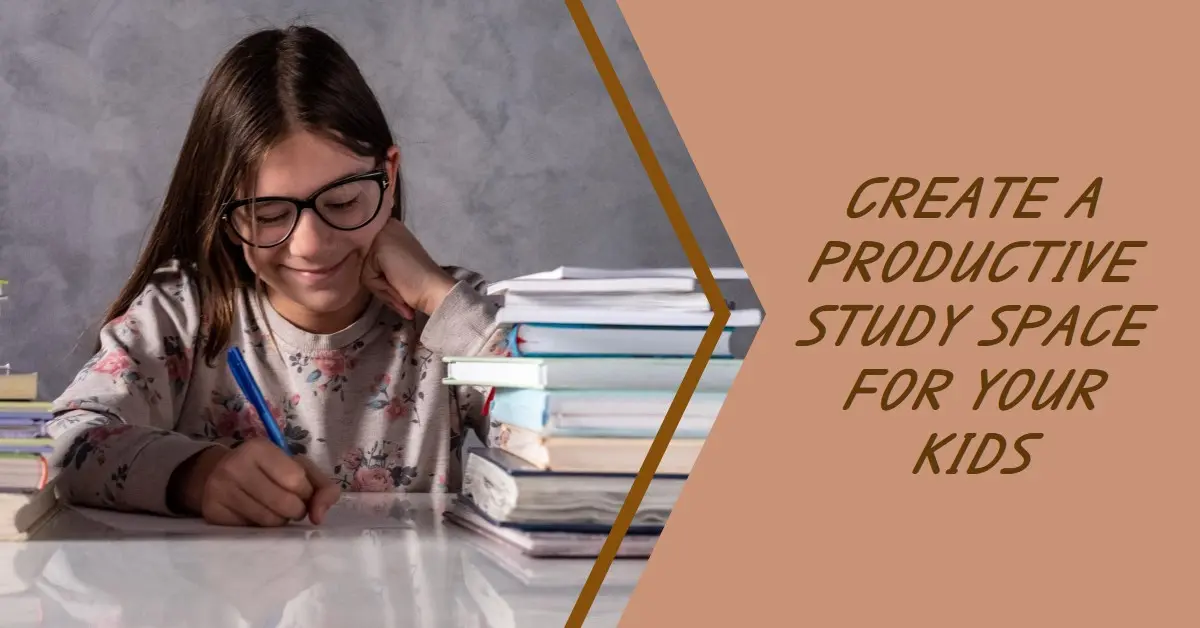If you are a parent concerned about whether your school-age child or children are getting the most out of their time off studying, you may have to consider the space they are returning to. For example, in high school, I didn’t have enough room for a desk so I would do all my work and revisions in the dining room. I did struggle with focusing and retaining much information when I had to work in that kind of space due to house noise and the general distractions that follow being in the heart of the house.
I believe that a designated area is important for any important work to be done—an area that allows you to focus and feel comfortable. Like how you would like to feel in your in-home office. There are little things you can do that your child can benefit from academically. Here in this guide, we hope you find some inspiration on how to create a productive study space for your kids.
Functional Desk
Every little study space needs a functional desk; try and aim for one that they can grow. No matter how big or small the desk is, it is essential to any little study space. This way, they can keep their work organised but have an area they can go to with any type of task, whether they go to school for fashion or are studying mathematics. A sturdy, functional desk is a great start to building a productive study space for your kids.
If you are struggling for space, then some places offer wall-mounted desks that offer features that you can fold to be tucked away. This way, you can get the most out of the space and transform the area, whether it is their bedroom or a quiet space in the house.
Comfortable Seating
A comfortable chair is another thing that is needed to create a productive study space for your kids. You should aim for a padded seat with a backrest; this way, they can spend a few hours studying each time without feeling uncomfortable. Something enjoyable to sit in will not only motivate your children to study and utilise the space but it will also add a bit of stylish decor to the space.
Practical Storage and Organisation System
As the year progresses, the work and revision notes will grow. Families with multiple children in different grade levels are more likely to experience clutter and disorganisation. Establishing a strong system of organisation is essential to guaranteeing an efficient and fruitful school day.
Try colourful organisers so you and your children can keep their things separate and avoid mixing up pieces of work. Think of it like at-home lockers. Whether your children are sharing the area, have their own productive study space, or need to keep some subject work completely separate, this will make cleaning up quick and easy while giving them some structure in their space.
Try and look online for some of these things to start your organisation journey: bins, shallow boxes, stackable trays, files, and art caddies so they can be transported and moved very easily.
Pro-tip for some home-school scheduling: Add a chalkboard of some sort, as some children benefit from visual tools. This can help them make notes and to-do lists, assisting them with keeping ahead of deadlines and little lessons they might have learned to keep their minds switched on.
Good or Natural Lighting
The best way to learn is to be in a space where you can concentrate and feel comfortable. That is why natural or good lighting is imperative to any work or productive study space. While some might like to work in the dark, having the option to have both won’t hurt. Pick a space close to a window or in a room where the light seems to bounce off every wall. There are always options to put in blinds in Watford for those really sunny days.
A layered approach that combines both natural and artificial lighting is ideal; you could even consider adding a wall sconce if you do not have the room or can’t find a better-suited space with lighting. This mounding scone can free up some space on the desk and add some flexibility to your lighting.
Involve Your Child
It will be a fun and productive way to get your kids excited about their own study space and can help them feel more attached to or invested in this space. It might be a good way to not only bond with your children but also get some inspiration, as it is their space. If they are saying specific things that will help them study better, it doesn’t hurt to consider them in the hope they contribute towards their grades.
Colourful and Personalisation
Another way to get them feeling invested or comfortable in the space is to add some cute personalised features, whether you add some pen holders with their names on them or some pictures around the space. This will encourage them to utilise the space, potentially for all their creative stuff as well as their study time.
Colours are a perfect way to brighten up the area and make it feel less like a classroom at home and more like a productive study space. Psychology research has shown that the colour blue helps with challenging learning situations. You don’t necessarily need to paint the walls blue but you can add some blue pens or blue paper. Adding a range of colours to the area could not only stimulate and draw out some happy feelings but also keep the things they have learned locked in the brain.



